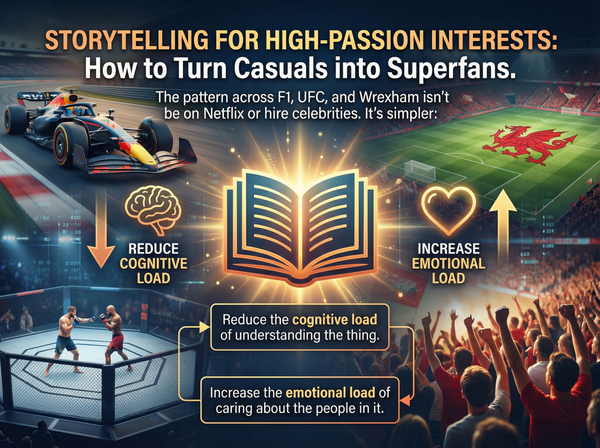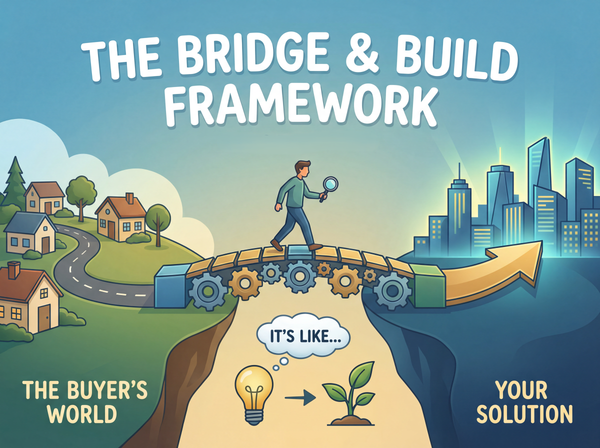The Hidden Leak in Your Revenue Engine: Onboarding
You've done it. You've navigated the demos, handled the objections, and closed the deal. The contract is signed and your new customer is ready to get started.
What happens next?
The sale isn't the finish line—it's mile marker one of what should be a very long race. This is where customer success, and more specifically, a bulletproof onboarding process, becomes your secret weapon for retention, expansion, and turning customers into evangelists.
Why Most Companies Get Onboarding Dead Wrong
Here's what typically happens: Customer signs contract on Friday. Monday morning, they get a generic Welcome to [Company]! email with login credentials and a link to your knowledge base. Maybe there's a calendar link to book a training session when convenient. Then... crickets.
Three weeks later, they're frustrated, confused, and already shopping your competitors.
Sound familiar?
The problem isn't that companies don't care about onboarding—it's that they treat it like an afterthought instead of the revenue-critical process it actually is. I've seen companies spend thousands on sales and marketing to acquire a customer, then assign their onboarding to a junior support rep with a generic checklist.
Think about onboarding like this: it's the difference between dropping someone off at the airport with a boarding pass versus personally walking them to their gate, introducing them to the flight crew, and making sure they have everything they need for a comfortable journey.
The Real Cost of Bad Onboarding
Companies with strong onboarding processes see customer lifetime values that are 50% higher than those with weak processes. But here's the kicker—it's not just about keeping customers longer. Well-onboarded customers expand their usage 60% faster and generate 3x more referrals.
Example: A CEO of an automation company was convinced they had a product problem. Turns out, customers who went through their original onboarding process (basically a single demo call and some documentation) had a 45% churn rate in the first quarter. After rebuilding their onboarding from scratch, that number dropped to 12%.
The difference? They stopped showing features and started delivering outcomes.
What Great Onboarding Actually Looks Like
Let me walk you through what world-class onboarding feels like from the customer's perspective, using a real example.
Day Zero: The Moment They Sign
Instead of waiting until Monday morning, great onboarding starts the moment the deal is closed. New customer gets a personalized video message from their dedicated Customer Success Manager. Not a generic welcome email—an actual video where their CSM mentions their company by name, references the specific challenges they discussed during the sales process, and outlines exactly what's going to happen over the next 30 days.
The customer also receives a Onboarding Success Kit via email that includes:
- A custom timeline with specific milestones and dates
- Direct contact information for their CSM (phone number, not just email)
- A pre-scheduled calendar invite for their kickoff call (within 48 hours)
- Access credentials with a note about what to expect when they first log in
The Discovery Deep-Dive
Here's where most companies rush to start showing their product. Big mistake.
The first conversation isn't about your software—it's about understanding exactly what success looks like for this specific customer. Spend 45 minutes on a discovery call asking questions like:
- Walk me through your current process for managing projects. What's working? What's broken?
- If you could solve one problem in the next 30 days, what would it be?
- How will you know if this implementation is successful? What metrics matter?
- Who on your team is most excited about this change? Who might be resistant?
This helps in building a relationship and demonstrating that this company cares about their success, not just their subscription fees.
Based on this conversation, a Success Blueprint can be created - a shared document that outlines their specific goals, the key features they'll focus on first, and a timeline for achieving their first major win.
Weeks 1-2: Foundation with Purpose
Most onboarding focuses on account setup and basic training. The advanced approach is ensuring every technical step is tied back to the customer's specific use case.
When they're setting up project templates, don't show them how to create a generic template. Help them build a template for their actual Q4 product launch, using their real timeline, their actual team members, and their specific deliverables.
During the training session (which includes key stakeholders from the customer's team), import one of the customer's current projects and show them exactly how it would look and function in the new system.
The customer leaves that call thinking, I can see exactly how this is going to make my life easier.
Week 3: The First Win
This is the make-or-break moment. Instead of moving on to advanced features, focus obsessively on helping them complete one meaningful project using the platform.
This may mean successfully managing their Q4 product launch from start to finish, checking in every few day to troubleshoot roadblocks, and celebrate small milestones along the way.
When they successfully launch their product - ahead of schedule and with better team coordination than they'd ever experienced - that's when they truly become a customer, not just a subscriber.
Month Two and Beyond: Expansion and Advocacy
With their first success under their belt, the conversation naturally shifts to what else is possible? The customer is already seeing value, their team is bought in, and they're curious about other features.
This is when advanced workflows, integrations, and additional use cases can be suggested to increase LTV. This can be positioned as natural next steps to help build on initial success.
The Three Onboarding Mistakes That Kill Customer Relationships
After analyzing hundreds of onboarding processes, I've noticed three patterns that almost guarantee customer churn:
Mistake #1: The Feature Firehose You're so excited about everything your product can do that you try to show it all at once. The customer gets overwhelmed, focuses on nothing, and never experiences real value. Instead, identify their top priority and nail that first. Everything else can wait.
Mistake #2: The Handoff Black Hole The salesperson disappears after the signature, the CSM doesn't engage for weeks, and the customer feels abandoned. That seamless handoff from sales to success? It needs to be choreographed like a relay race, not a casual conversation.
Mistake #3: The One-Size-Fits-All Approach Enterprise customers need different onboarding than SMB customers. Technical buyers need different support than business users. Yet most companies use the same process for everyone. Segment your onboarding based on company size, technical sophistication, and use case complexity.
Building Your Onboarding Feedback Engine
The intelligence you gather makes everything else better.
Your CSMs are on the front lines, seeing exactly where customers struggle, what creates aha moments, and which features drive real business value.
Set up a monthly meeting between your CS and sales teams to discuss onboarding trends. Questions to explore:
- Which features are customers actually using first (vs. what we think they should use)?
- What objections or confusion are coming up repeatedly?
- Which customers are progressing fastest, and what do they have in common?
- Where are we losing people, and why?
Your Next Move
If you're reading this and thinking about your own onboarding process, start with one simple question: If I were a new customer today, would I stick around?
Remember, every customer you lose in the first 90 days isn't just lost revenue—it's a missed opportunity to build the kind of relationship that generates referrals, case studies, and expansion revenue for years to come.
The companies that master onboarding don't just retain more customers—they create armies of advocates who become their best salespeople.
Keep Crushing!
- Sales Guy


